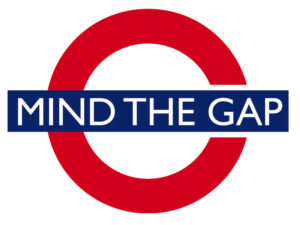Sir Keir Starmer’s political trajectory has been marked by pragmatism, discipline, and a focus on governance over ideology. His leadership of the Labour Party has seen him move the party firmly to the centre, distancing it from the left-wing policies of his predecessor, Jeremy Corbyn. However, Starmer’s policy positions, leadership style, and strategic approach often align more with those of moderate Conservative prime ministers than with traditional Labour leaders. His focus on law and order, fiscal responsibility, border control, and a pro-business economic outlook suggests that he could have been a more natural fit within the Conservative Party, particularly in the tradition of One Nation Toryism.
In my view, Keir Starmer’s leadership of the Labour Party has been marked by a tough-on-crime stance, fiscal conservatism, and a ruthless purge of the party’s left wing—policies and actions that, in my opinion, align more closely with Conservative leaders like Margaret Thatcher, David Cameron, and John Major than with traditional Labour values. His background as a barrister and Director of Public Prosecutions reinforces his establishment credentials, while his emphasis on law and order, border security, and pro-business policies suggests to me that he would have been a natural fit within the Conservative Party’s moderate wing. If he were leading the Tories instead of Labour, I believe Starmer might have been seen as a pragmatic, centre-right leader—raising the question of whether he is the best Conservative prime minister that Labour never had.
By examining Starmer’s background, his policy positions, his actions within the Labour Party, and his leadership style, this essay will argue that he would have been a more effective and ideologically consistent leader of the Conservative Party than of Labour. In particular, parallels will be drawn between Starmer and past Conservative leaders, including Margaret Thatcher, David Cameron, and John Major.
Keir Starmer’s Background: An Establishment Figure with Conservative Credentials
Keir Starmer’s professional background before entering politics aligns closely with the profile of a moderate Conservative statesman. Before becoming an MP, he was a barrister specialising in human rights law, later rising to prominence as Director of Public Prosecutions (DPP) from 2008 to 2013. In this role, he was responsible for overseeing the Crown Prosecution Service (CPS), ensuring that laws were upheld, and leading high-profile legal cases concerning terrorism, violent crime, and national security. His tough, law-and-order stance was notably different from the traditional left-wing approach to criminal justice, which often favours rehabilitation over punitive measures.
During his tenure as DPP, Starmer made decisions that reinforced the power of the state in maintaining law and order. He played a key role in prosecuting terrorism-related cases, a position that aligned with Conservative rhetoric on national security. He also backed increased sentencing powers for knife crime and other violent offences, advocating for stricter punishments rather than leniency. His belief in the importance of strong policing and criminal prosecution was more in line with the tough-on-crime stance of Conservative figures like Margaret Thatcher and David Cameron than with the more lenient, progressive views typically associated with Labour politicians.
In addition to his approach to law and order, Starmer’s knighthood and establishment credentials place him within the same elite professional circles often associated with Conservative leadership. Unlike traditional Labour leaders who emerged from trade unions or working-class activism, Starmer’s career trajectory was one of professional success in an institutional and legal setting. This technocratic, policy-driven approach to politics is characteristic of Conservative leaders such as John Major and David Cameron, both of whom valued administrative competence over ideological purity.
Leadership Style: More John Major Than Tony Blair
While many have compared Starmer to Tony Blair, his leadership style is arguably more similar to John Major:
- Both are cautious, pragmatic, and methodical, preferring slow, steady change rather than dramatic ideological shifts.
- Like Major, Starmer has prioritised electability over internal party ideology.
- While Major navigated the divisions between Thatcherites and moderates, Starmer has tried to balance centrists and soft-left factions within Labour.
Starmer’s Crackdown on Labour’s Left: A Thatcherite Purge?
Perhaps the clearest indication that Starmer would have been a better Tory than Labour leader lies in his aggressive and systematic purge of Labour’s left-wing faction. Upon taking over the Labour Party in 2020, he inherited an organisation deeply influenced by Jeremy Corbyn’s brand of democratic socialism, which had alienated many centrist and business-friendly voters. Starmer quickly set about dismantling Corbyn’s legacy and marginalising the left, taking a ruthless and strategic approach reminiscent of Margaret Thatcher’s purge of moderate “One Nation” Conservatives in the 1980s.
One of Starmer’s most decisive moves was the suspension of Jeremy Corbyn from the Labour Party. Corbyn was removed after downplaying the findings of the Equality and Human Rights Commission (EHRC) report on antisemitism within Labour. While the report itself did not single out Corbyn for blame, his response led to a swift and highly public expulsion from the parliamentary party. This move was not just about antisemitism—it was a calculated political maneuver designed to eliminate Corbyn’s influence and send a strong message that the Labour Party was under new management. This level of strategic ruthlessness echoes Thatcher’s suppression of internal dissent within the Conservative Party, where she systematically replaced moderates with hard-line free-market supporters.

Beyond Corbyn, Starmer marginalised the Socialist Campaign Group, which included key Corbynite figures such as Diane Abbott, John McDonnell, and Rebecca Long-Bailey. These MPs had been some of the most vocal supporters of redistributive taxation, nationalisation, and increased union power—all policies that Starmer sought to distance Labour from. Long-Bailey, in particular, was sacked from the Shadow Cabinet in 2020 for allegedly sharing antisemitic conspiracy theories, though many saw this as a convenient excuse to remove one of Corbyn’s closest allies.
In addition to removing individuals, Starmer rewrote the Labour Party’s internal rules to weaken the left’s influence. He introduced stricter requirements for candidate selection, making it more difficult for grassroots activists to install socialist MPs. The move centralised decision-making, shifting power away from unions and local activists—similar to how David Cameron restructured the Conservative Party in the 2010s to prevent radical right-wing candidates from disrupting his modernisation agenda.
Under Starmer, Labour’s policy platform has also undergone a significant shift to the right. He has refused to commit to scrapping austerity-era welfare cuts, signalling a more fiscally conservative approach. His rhetoric on immigration has hardened, with pledges to tackle illegal migration and strengthen border controls. His economic policies now prioritise fiscal responsibility and pro-business measures, aligning him more closely with mainstream Conservative economic thought than with traditional Labour socialism.
This aggressive suppression of Labour’s left mirrors Margaret Thatcher’s restructuring of the Conservative Party in the 1980s, when she eliminated the influence of pro-state interventionist “wets” within her party. Just as Thatcher was uncompromising in shaping the Tories into a pro-market, right-wing force, Starmer has been relentless in his mission to rebuild Labour as a centrist, business-friendly entity. His approach has been strategic rather than ideological, prioritising electability over party unity—a hallmark of Conservative leadership.
Starmer’s Policies: A Natural Conservative Agenda
Law and Order: Tough on Crime, Conservative in Practice
One of the most striking areas where Starmer aligns with Conservative thinking is in law and order. Since becoming Labour leader, he has promoted a tough-on-crime stance, emphasising more police, longer prison sentences, and stronger action against antisocial behaviour. His rhetoric closely resembles that of Margaret Thatcher, who saw law and order as essential to maintaining social discipline.
While Labour traditionally places more emphasis on rehabilitation and social justice, Starmer has repeatedly spoken about the need for stricter policing and criminal sentencing, positioning himself closer to David Cameron’s “tough but fair” policies on law enforcement. His focus on public safety and cracking down on crime reflects a belief in state authority and discipline, which are core Conservative values.
Economic Policy: Fiscal Prudence Over Social Spending
Historically, the Labour Party has been associated with higher government spending, progressive taxation, and an interventionist economic approach. However, Starmer has signalled a strong commitment to balanced budgets, responsible borrowing, and a pro-business outlook—principles that are more aligned with traditional Conservative fiscal policy.
Unlike his predecessors, Starmer has refused to commit to major increases in taxation on the wealthy, nor has he proposed significant public spending increases. His cautious economic strategy resembles John Major’s pragmatic approach to governance, prioritising economic stability over ambitious social reform.
Immigration: A Shift to the Right
Starmer has also taken a noticeably tougher stance on immigration, particularly in response to the ongoing small boats crisis in the English Channel. He has pledged to strengthen border security, increase deportations, and prevent illegal crossings, echoing David Cameron’s promises on immigration control.
While Labour has traditionally been seen as a party of liberal immigration policies, Starmer’s rhetoric on the issue suggests he recognises that public sentiment favours a more controlled, sovereignty-driven approach—a stance often associated with One Nation Conservatism.
Keir Starmer’s background, leadership style, and policies suggest that he would have been a natural fit within the Conservative Party’s moderate wing. His law-and-order stance, fiscal caution, and focus on electability over ideology resemble the approaches of Margaret Thatcher, John Major, and David Cameron more than they do traditional Labour leaders. If he were leading the Conservative Party, Starmer might have been seen as a pragmatic, centre-right leader capable of uniting different Tory factions. Instead, as Labour leader, he faces the challenge of balancing his natural conservatism with the expectations of a centre-left electorate.








































































One Response
Very interesting piece. It very much feels like the 90s where Major steadied the ship before Blair got things really going once he’d been teed up. Will be very interesting to see if, in 2029, people have still had enough of centre-right politics and whether they lurch to the left or the right. More interesting still will be whether Labour can prove they’ve steadied the ship and regain electability whilst evolving their policies closer to their natural centre-left home in time for it to really matter.